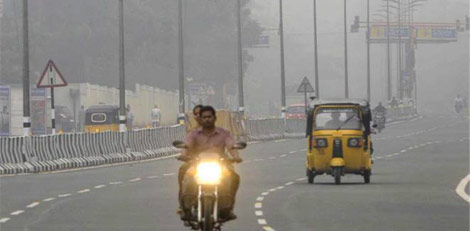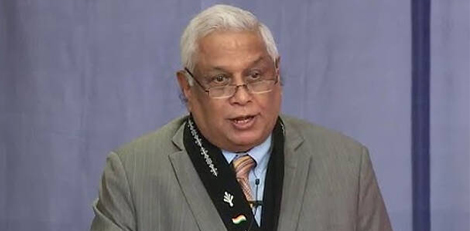Intense shivering cold winter session after a gap of 6 years
Posted on: 10/Jan/2019 3:10:02 PM

The residents of several areas in Tamil Nadu including the Chennai Metro City have been experiencing an intense shivering-cold winter session after a gap of 6 years! The chill winter pervades through the daytime as well! Meanwhile, the northeast monsoon rainy season has failed utterly in Tamil Nadu causing great concern and disappointment. There has been a shortfall over 55% as compared to the average in the Chennai Metro City. This has led to the prospects of an acute shortage of drinking water in the coming days. At the same time, the intensity of the cold winter has kept increasing.
Extreme chill weather is prevailing in the north and northeastern districts including Chennai, Krishnagiri, Vellore, and Salem and even more intense cold winter session is prevailing in Nilgiri and the adjacent mountainous regions.
As Valparai is experiencing intense cold, there has been snowfall on the lands. An average temperature of 5 Degrees Celsius has been recorded here.
As at 8.30 AM yesterday (Wednesday, 9th January) a maximum winter weather condition has been recorded in the Chennai Metro City after a gap of 6 years. Earlier, on 17th January 2012, a temperature of 17.7 Degrees was recorded in Chennai. In the suburban areas of the Chennai Metro City, a temperature of 18.2 Degrees was recorded,
As per the estimation of the Chennai Meteorological Centre, the cold climate will persist in the coming days. However, there has been no frozen snow! Generally, during the winter season, the humidity will be high enough with the floors getting wet.
Presently, with the persisting extreme winter, the snow-drops and snow-bubbles are seen on the plants only in mountainous regions. However, in areas such as Chennai, no snowfall is observed and only a dry winter climate prevails. The director of the Chennai Meteorological Centre, S. Balachandran, explained regarding this: During the winter season, snowdrops are formed depending on the humidity level in the winter season. This phenomenon of snowfall occurs in the regions where the area is lower than the sea-level and in the mountainous regions. However, it is rather rare for snowdrops formation in areas at sea-level or the coastal regions. As the temperatures reach a uniform higher level in the areas where sea breeze blows, it is rather rare fo snowdrops to be formed.
Where there is a sea breeze, there are no chances for the formation of snowdrops. In a similar vein, when the wind humidity is lower, only a dry fog will persist. There is the possibility of snow-bubbles forming in the atmosphere in a few places, due to the reasons of rapid urbanization, and more construction activities, increased pollution in the sir, etc., the humidity of the winter season will remain in the form of mist only.








